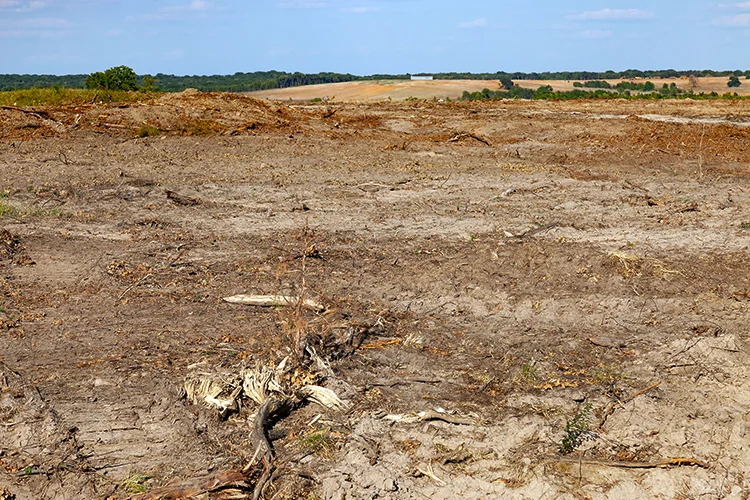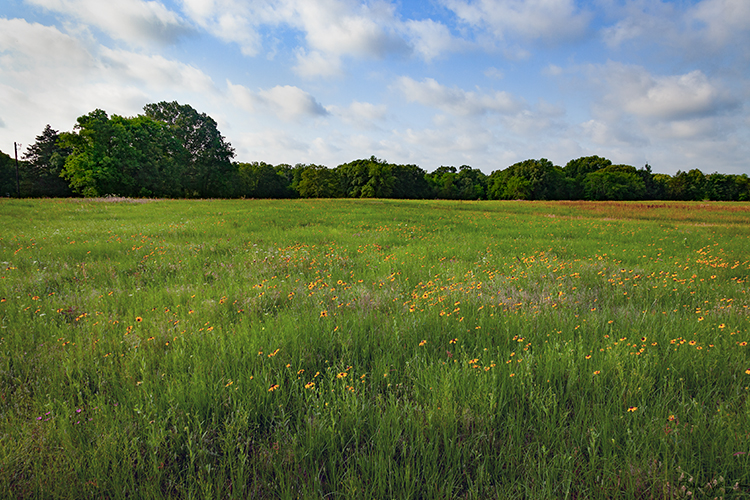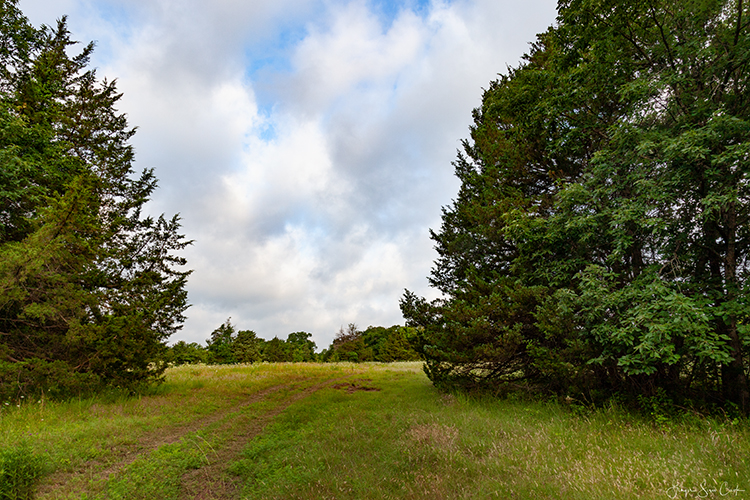Ginger and I had been shown where the Wilks Cemetery was by Mike Barbaro, and been given access to his land for our cemetery visits. On some level we knew that the cemetery was, at that point, actually owned by North Texas Municipal Water District (NTMWD), but until construction started Mike seemed to remain in control of what had been his land and his permission to visit seemed relevant and sufficient to us. After construction began, we knew that we had to gain the support of NTMWD if our project was to be successful. And, as the clearing of the dam and basin area continued, the need to ask for that support became increasingly more urgent. I had reached out early on to Larry Standlee, member of the Fannin County Historical Commission and local graveyard expert, for information about the Wilks Cemetery. In mid-July, we learned from Larry that NTMWD would be presenting a petition to the Fannin County District Court regarding the removal of the remains - that, in fact, a court order was necessary to begin the disinterment process. We attended that hearing and while waiting for it to begin were introduced, for the first time, to folks from NTMWD. They were open, welcoming, and friendly, and we left the hearing optimistic about gaining official support for our project. We also learned at that meeting that the removal would be handled by a professional bio-archaeology team under the direction of a respected professor in the discipline from SMU. Having had no idea what to expect, we were relieved to learn of the detailed legal requirements and the great respect, care, and scientific rigor the team intended to bring to the relocation of the burial sites.
Judge Blake did not grant the court order at that hearing. She asked for additional information and scheduled a follow-up hearing for August 1, 2018. Ginger and I attended that followup hearing, and again were able to visit with NTMWD staff while waiting for the case to be called. We met Cody Davis, the NTMWD consultant who is in charge of both the cemetery removals and the Riverby mitigation project, along with his colleague, Dr. Allen Skinner. Cody talked to us about having worked on the reservoir project for close to ten years. From him we learned a bit about the lab work and DNA analysis that will occur in the lab at SMU before the disinterred remains are reburied, work that would be especially important if any unmarked graves were found. He also explained that the disinterment process itself would take weeks, perhaps months.
Ginger and I left the hearing and drove out to Carson to check on the progress of construction. The images below are from that drive. They illustrate how quickly the area had changed from the beginning of June to the beginning of August, and perhaps evoke the sense of urgency Ginger and I were feeling. The pace of change was accelerating rapidly.
First sight of dam being built across from Mr Foreman’s land, photo by Ginger Sisco Cook.
Along FM1396 towards Carson, photo by Ginger Sisco Cook.
Along FM1396 towards Carson, photo by Ginger Sisco Cook.
Along FM1396 towards Carson, photo by Ginger Sisco Cook.
On CR2705, photo by Ginger Sisco Cook.
Tranquil still, photo by Ginger Sisco Cook.
Encouraged by the two casual visits we’d had with NTMWD staff and consultants at the hearings, Ginger and I drove to NTMWD headquarters in Wiley on Aug. 27, 2018 to discuss our project with Jeff McKito, Public Relations Specialist. We laid out our vision and asked for permission to continue our work. Jeff gave generously of his time, asked engaging questions, and seemed genuinely interested. He asked for time to circulate our plans a bit internally and get back to us. We left feeling buoyed by a good meeting and a hopeful prospect.
On Sept. 10, 2018, a Monday, we learned that the District would support our project. We also learned that the disinterment would begin on Wednesday, Sept., 12, with the removal of the tombstones for safe keeping. We were invited to go out to the Cemetery with Jeff on the 12th for our last visit to the intact site - the closing of an important chapter in our journey had arrived.
Story by Wanda Holmes Oliver.

















